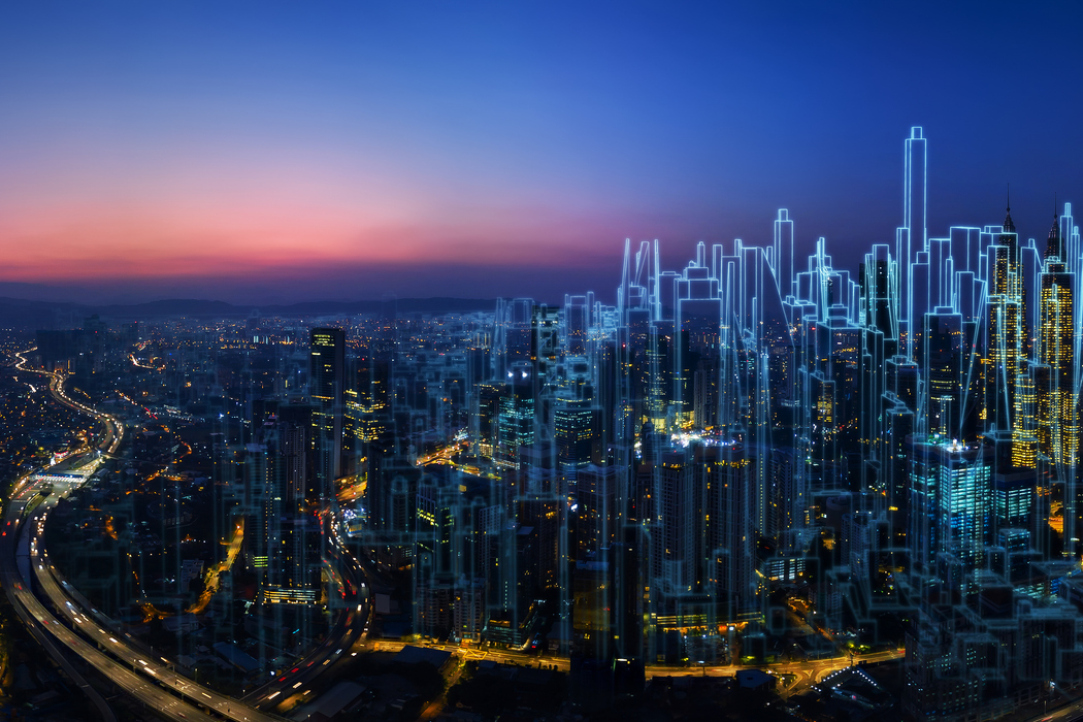What Makes Cities Attractive to Innovators?

How do we evaluate the contribution of innovations to urban development? Why do cities need innovation? How do cities attract top talents? These and many other questions were addressed by the participants of the international online discussion ‘Increasing the Innovation Attractiveness of Global Cities: Best Practices’ organised by the HSE Institute for Statistical Studies and Economics of Knowledge (HSE ISSEK) on March 1, 2023. The event also featured the presentation of new outcomes of a global study on urban innovation carried out since 2020.
Cities have always been a focal point of scientific knowledge, ground-breaking technologies, and entrepreneurial and creative prosperity. HSE ISSEK studied 200 cities worldwide that stand out in terms of attracting top talents. The HSE Global Cities Innovation Index (HSE GCII) research project presents a holistic approach to assessing the innovation potential of cities by combining technological development, creative industries, and the urban environment of a city.
The quantitative assessment of various factors that contribute to attracting global innovators to cities uses a system of 74 indicators and is based on data derived from verifiable international sources recognised by the expert community.
The outcomes of the research project were presented by Evgeniy Kutsenko, Director of the ISSEK Russian Cluster Observatory.

Evgeniy Kutsenko
‘We have been measuring city-level innovations since 2020 and are developing our own approach that embraces technological innovation, creative industries, and the urban environment. Our approach uses non-statistical indicators that help us compare the levels of innovation development in cities in different countries. Our information resources are international aggregators, rankings, and databases on technology and creativity leaders. The world of innovation is extremely heterogeneous: innovation centres are similar in terms of urban environment quality, but are drastically different in terms of technology development. The gap of creative industry development is even bigger.’
Ozcan Saritas, Head of the ISSEK Laboratory for Science and Technology Studies, emphasised that ‘Innovations are not only about products, but about their creators and their interaction. The hardest thing is to evaluate the contribution of innovations to city development and the effectiveness of innovations at large.’
HSE University has addressed the major research challenge of providing an objective evaluation of innovation development in cities. Unlike most rankings of urban innovation development, HSE GCII relies not only on invention and publication statistics for city residents and various environment indicators—it also uses a unique database of innovation leaders. This database includes the biggest corporations, leading research centres, start-ups and unicorn businesses that populate the city, together with leaders in creative industries such as cinema, animation, music, video games, fashion, etc.
The main advantage of such a database is that the evaluations of all cities are comparable.
This would be impossible using national statistics due to the differences in statistical systems across countries.
Joe Ravetz, Co-Director of the Centre for Urban Resilience & Energy, University of Manchester, spoke about the conceptual framework of innovation: ‘Innovators should understand their reasons to be in a certain city. Innovators are born to be global, but at the same time, they are closely tied to the place where they live and work. The development of urban innovation is synchronised with the evolution of network interactions within the city. Depending on the stage of development, there are linear, evolutionary, and co-evolutionary cities, where the density of interactions between different actors is the highest. Such cities are the most successful at innovation.’
Another participant of the discussion, Mohamed Ramadan A. Rezk, Director of the Egyptian Science, Technology and Innovation Observatory, Academy of Scientific Research and Technology, emphasised the role of creative industries in innovation and the importance of social innovation. ‘In innovation measurement, we should remember the essential problem—how can we develop innovation? Where will we find resources for this purpose?’ he said.
Yunjie Sun, Professor at the Institute of S&T Foresight and Statistics, Chinese Academy of Science and Technology for Development (CASTED) talked about the system of innovation measurement in China, where the focus is on knowledge generation and transfer.
A full version of HSE GCII 2023 will be presented to the research and expert community at the end of March 2023.
See also:
Moscow and St Petersburg Rank among Global Leaders in Spatial and Technological Development
HSE experts, in collaboration with researchers from China and India, have participated in the development of the Urban & Innovation Environment Index, a global ranking of cities. Moscow ranks fifth in the final global rating of urban agglomerations and first in the rating for those in BRICS+ countries. St Petersburg ranks seventh in the global rating and third in the BRICS+ rating.
Faculty of Urban and Regional Development Develops a Draft of a New Transport Scheme of Obninsk
On May 3rd, a briefing and presentation session of a project for the development of the city's transport scheme took place in the Obninsk administration. This large-scale project has been implemented by staff from the Institute of Transport Economics and Transport Policy Studies of the HSE Faculty of Urban and Regional Development.
Card Index: City as a Palimpsest
Any cultural landscape is a narrative or a story. A big, modern city with its multiple contesting meanings and social practices, an ongoing dialogue of different eras, and physical spaces coexisting with imaginary ones can be compared to a complex, multi-layered text. A recent paper by Ivan Mitin, Associate Professor in the Faculty of Urban and Regional Development, portrays the big city as an enormous, continuously updated manuscript.
Consortium Led by HSE University Wins Norilsk Renovation Competition
The Open International Architectural and Planning Concept Competition for the Renovation of Norilsk up to 2035 received a total of 27 submissions from 12 individual applicants and 15 consortiums from 13 countries. The winner was a consortium of six companies from Russia, Austria, and France led by HSE University. Eleven HSE University institutes and competency centres were involved in the development of the project. The aim of the competition was to create a comprehensive vision of the development of Norilsk up to 2035.
HSE Relaunches Webinar Series ‘Megacities of the Future 2:0. New Challenges’
HSE University is pleased to announce the relaunch of its popular webinar series, Megacities of the future 2:0. New Challenges. The series focuses on issuesof modern urban development and is team taught by HSE University professors and lecturers from different faculties. The webinars consider urban developmental issues through the lenses of a range of fields, including Arts and Design, Computer Science, Electronics, Mathematics and Communication Systems, Economics and Management, Urban Studies, and Russian Studies.
Exploring Growth Patterns in Russia’s Largest Cities
Robert Buckley, a senior fellow in the Graduate Program in International Affairs at The New School in New York City, works largely on issues relating to urbanization in developing countries. At the upcoming XIX April International Academic Conference on Economic and Social Development, he will be participating a roundtable on Urbanization and Economic Development during which he will give a presentation entitled ‘The Morphology of Large Russian Cities: Patterns and Conjectures’.
HSE’s Projects for the City
Staff from the Design Laboratory (the design wing of the HSE School of Design) teamed up with design students to carry out an extensive study on the territorial branding of Moscow’s various districts. In addition, undergraduate and graduate students of HSE MIEM developed ‘smart systems’ for monitoring urban space and managing energy consumption and lighting systems. The projects were presented to Moscow Mayor Sergey Sobyanin during his most recent visit to the Higher School of Economics.


